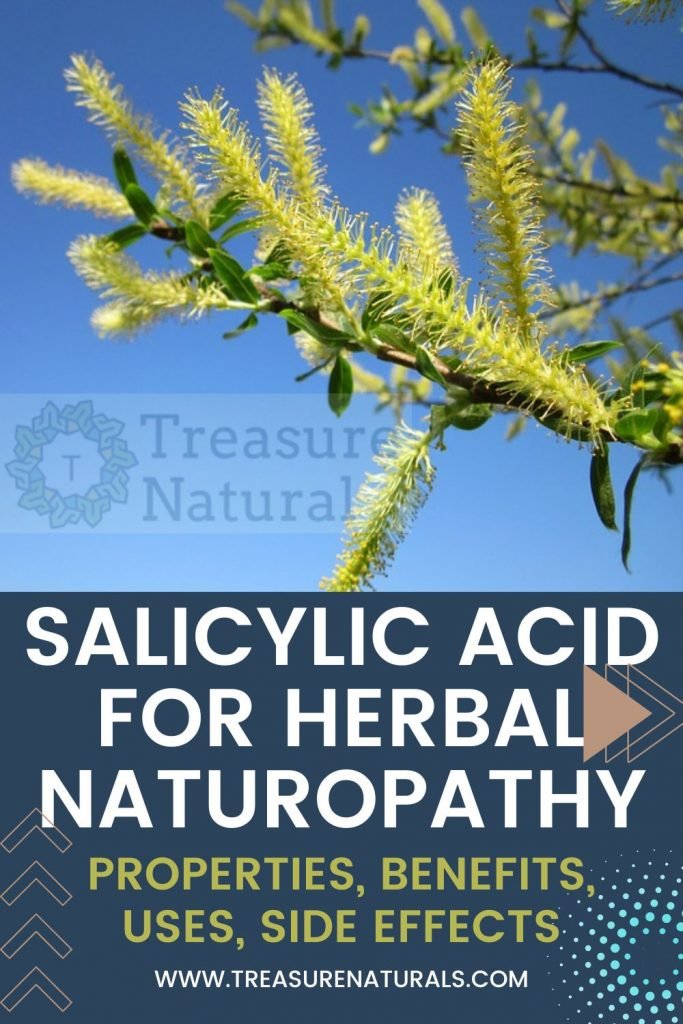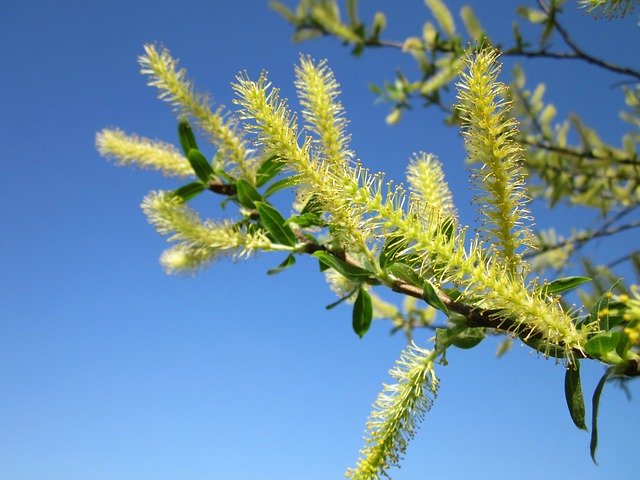
Salicylic acid is a derivative of a carboxylic acid, consisting of a phenolic ring and a carboxylic group. The simultaneous presence of an acidic function (given by the carboxyl group) and a phenolic one, gives this molecule remarkable antirheumatic properties, as well as anti-inflammatory and anti-inflammatory.
Willow extracts have been used since ancient times for their healing properties. At the end of the nineteenth century numerous researches on willow extracts lead to the synthesis in the laboratory, by acetylation of salicylic acid, of aspirin; the pharmaceutical product owes its name to Spirea sp., another plant from which salicylic acid is obtained.
Where is salicylic acid found
Salicylic acid is contained in several plants such as Salix alba L. and Filipendula ulmaria (L.) Maxim. also known by the synonym of Spirea ulmaria L.
Willow is an arboreal plant that can reach 9-10 m in height and in some cases exceed 25 m; the stem is very large, but short, and bears a very wide and oval-shaped crown below which there are pendulous ramifications. The latter, very often, tend to reach even the ground. The leaves, elongated in shape, are spirally arranged, bright green in color, tending to gray on the lower page. Willow is a dioecious plant with male and female inflorescences carried by different trees.
Willow has been used since ancient times for its therapeutic properties. In the first century a.C. Pliny the Elder attributed to the leaves the property of containing sexual intemperance. In the twelfth century. Hildegard von Bingen used flowers and leaves to combat insomnia, menstrual pain and spasms. Mattioli, a Renaissance doctor, used the leaves against insomnia, as a painkiller and to promote healing.
The queen of meadows or olmaria is a perennial herbaceous plant, 60 to 150 cm tall and grows in humid and marshy environments. The leaves are pinnate dark green on the upper pages and silvery on the lower one. The rigid and erect stems support whitish inflorescences with small and very fragrant flowers.
Other plants that contain salicylates are Gaultheria procumbens L., a shrub native to Nor America; Purple tricolor L., also known as pansè; Fragaria vesca L., or wild strawberry and birch, Betula alba L..
Properties of salicylic acid
All the properties of willow known since ancient times are attributable to its active ingredient, salicylic acid.
From the bark of the willow is extracted a glucoside, salicin. Once taken, this is metabolized by the intestinal flora into saligenin and by the liver into salicylic acid. Due to these transformations, the time to reach the therapeutic index and the duration of the same are higher than with synthetic salicylates.
Although the therapeutic dose is rarely reached with herbal extracts of willow and with the recommended doses, willow is useful for antirheumatic and anti-inflammatory action. The use is recommended in case of osteo-articular inflammation, myalgia and neuralgia.
Willow extracts are present in various herbal preparations also for febrifuge and antifebrile action.
For external use willow extracts are used, for example, in the treatment of acne as anti-inflammatory and healing.
Contraindications of salicylic acid

Willow extracts are contraindicated in case of allergy to salicylates, and people allergic to aspirin should avoid its use.
In addition, the extracts can give problems at the gastric level, such as nausea, irritation, vomiting and gastrointestinal bleeding. This toxicity is to be considered lower in case of intake of salicylates of willow compared to aspirin, due to the lower concentration of salicylates in herbal preparations.
Finally, avoid the simultaneous intake of willow extracts with drugs, synthetic or vegetable, antiplatelets and anticoagulants for possible interactions.






